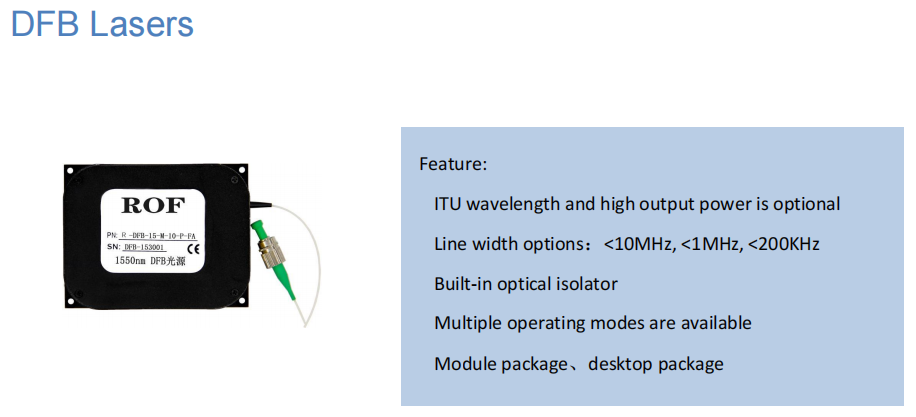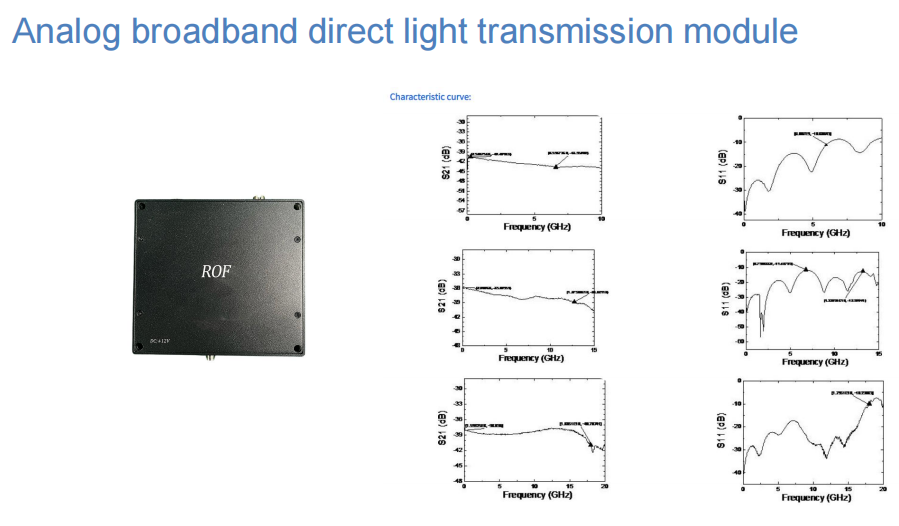Development and market status of tunable laser(Part two)
Working principle of tunable laser
There are roughly three principles for achieving laser wavelength tuning. Most tunable lasers use working substances with wide fluorescent lines. The resonators that make up the laser have very low losses only over a very narrow wavelength range. Therefore, the first is to change the wavelength of the laser by changing the wavelength corresponding to the low loss region of the resonator by some elements (such as a grating). The second is to shift the energy level of the laser transition by changing some external parameters (such as magnetic field, temperature, etc.). The third is the use of nonlinear effects to achieve wavelength transformation and tuning (see nonlinear optics, stimulated Raman scattering, optical frequency doubling, optical parametric oscillation). Typical lasers belonging to the first tuning mode are dye lasers, chrysoberyl lasers, color center lasers, tunable high-pressure gas lasers and tunable excimer lasers.
Tunable laser from the perspective of realization technology is mainly divided into: current control technology, temperature control technology and mechanical control technology.
Among them, the electronic control technology is to achieve wavelength tuning by changing the injection current, with NS-level tuning speed, wide tuning bandwidth, but small output power, based on the electronic control technology mainly SG-DBR (sampling grating DBR) and GCSR laser(auxiliary grating directional coupling backward-sampling reflection) . The temperature control technology changes the output wavelength of the laser by changing the refractive index of the laser active region. The technology is simple, but slow, and can be adjusted with a narrow band width of only a few nm. The main ones based on temperature control technology are DFB laser(distributed feedback) and DBR laser(Distributed Bragg reflection). Mechanical control is mainly based on MEMS (micro-electro-mechanical system) technology to complete the selection of wavelength, with large adjustable bandwidth, high output power. The main structures based on mechanical control technology are DFB (distributed feedback), ECL (external cavity laser) and VCSEL (vertical cavity surface emitting laser). The following is explained from these aspects of the principle of tunable lasers.
Optical communication application
Tunable laser is a key optoelectronic device in a new generation of dense wavelength division multiplexing system and photon exchange in all-optical network. Its application greatly increases the capacity, flexibility and scalability of optical fiber transmission system, and has realized continuous or quasi-continuous tuning in a wide wavelength range.
Companies and research institutions around the world are actively promoting the research and development of tunable lasers, and new progress is constantly being made in this field. The performance of tunable lasers is constantly improved and the cost is constantly reduced. At present, tunable lasers are mainly divided into two categories: semiconductor tunable lasers and tunable fiber lasers.
Semiconductor laser is an important light source in optical communication system, which has the characteristics of small size, light weight, high conversion efficiency, power saving, etc., and is easy to achieve single chip optoelectronic integration with other devices. It can be divided into tunable distributed feedback laser, distributed Bragg mirror laser, micromotor system vertical cavity surface emitting laser and external cavity semiconductor laser.
The development of the tunable fiber laser as a gain medium and the development of the semiconductor laser diode as a pump source has greatly promoted the development of fiber lasers. The tunable laser is based on the 80nm gain bandwidth of the doped fiber, and the filter element is added to the loop to control the lasing wavelength and realize the wavelength tuning.
The development of tunable semiconductor laser is very active in the world, and the progress is also very fast. As tunable lasers gradually approach fixed wavelength lasers in terms of cost and performance, they will inevitably be used more and more in communication systems and play an important role in future all-optical networks.
Development prospect
There are many types of tunable lasers, which are generally developed by further introducing wavelength tuning mechanisms on the basis of various single-wavelength lasers, and some commodities have been supplied to the market internationally. In addition to the development of continuous optical tunable lasers, tunable lasers with integrated other functions have also been reported, such as the tunable laser integrated with a single chip of VCSEL and an electrical absorption modulator, and the laser integrated with a sample grating Bragg reflector and a semiconductor optical amplifier and an electrical absorption modulator.
Because the wavelength tunable laser is widely used, the tunable laser of various structures can be applied to different systems, and each has advantages and disadvantages. External cavity semiconductor laser can be used as a wideband tunable light source in precision test instruments because of its high output power and continuous tunable wavelength. From the perspective of photon integration and meeting the future all-optical network, sample grating DBR, superstructured grating DBR and tunable lasers integrated with modulators and amplifiers may be promising tunable light sources for Z.
Fiber grating tunable laser with external cavity is also a promising kind of light source, which has simple structure, narrow line width and easy fiber coupling. If the EA modulator can be integrated in the cavity, it can also be used as a high speed tunable optical soliton source. In addition, tunable fiber lasers based on fiber lasers have made considerable progress in recent years. It can be expected that the performance of tunable lasers in optical communication light sources will be further improved, and the market share will gradually increase, with very bright application prospects.
Post time: Oct-31-2023







